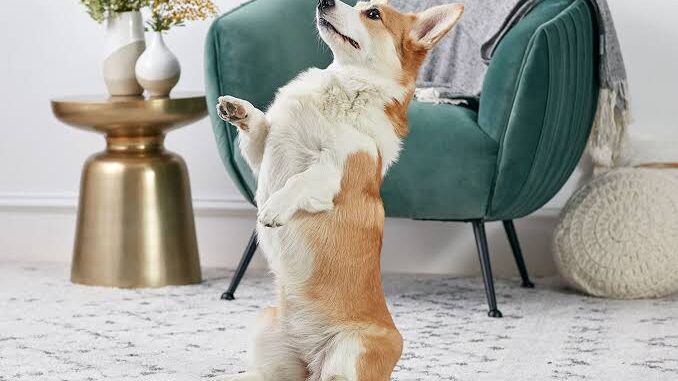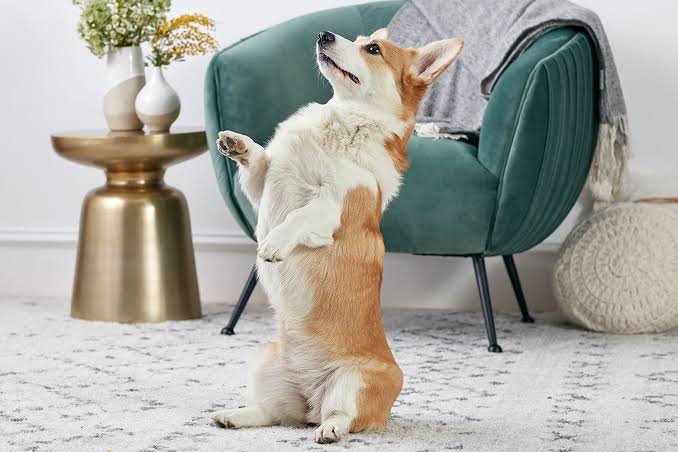
Fun Tricks to Teach Your Dog: Teaching your dog tricks isn’t just about showing off at the dog park it’s one of the most enriching and rewarding things you can do for your pup. Trick training boosts your dog’s mental sharpness, improves obedience, and builds trust between you two. Plus, it’s just plain fun!

Whether you’re working with a playful puppy or an older dog looking for a challenge, this guide will walk you through 10 fun tricks and how to teach them step-by-step.
Why Trick Training Is Important
Before we dive into the tricks, it’s helpful to understand why trick training is a powerful activity:
- Mental stimulation: Dogs need brain workouts as much as physical ones.
- Confidence boost: Learning new tasks helps shy or anxious dogs build self-esteem.
- Improved focus and obedience: Training enhances communication between you and your dog.
- Great for bonding: Shared success builds trust and love.
- Fun for everyone: Trick time can become a favorite part of your day.
Tips Before You Start Training
- Use positive reinforcement: Treats, toys, or praise help reinforce good behavior.
- Keep sessions short: 5–10 minutes at a time is plenty.
- Be patient: Every dog learns at their own pace.
- End on a positive note: Always finish with a success and a reward.
- Use a clicker (optional): Clicker training offers precise timing and faster results.
10 Fun Tricks to Teach Your Dog
1. Shake Hands / Paw
Why It’s Fun: It’s adorable, easy to teach, and the perfect beginner trick.
How to Teach:
- Sit with your dog and hold a treat in your hand.
- Say “shake” while gently tapping one of their front paws.
- When they lift their paw—even slightly—reward immediately.
- Repeat daily until they offer the paw on command.
Tip: Always reward the same paw first to build consistency.
2. Spin
Why It’s Fun: A cute, quick movement that impresses everyone.
How to Teach:
- Hold a treat in front of your dog’s nose.
- Move your hand in a circle slowly to guide them.
- Say “spin” as they follow the treat in a circle.
- Reward when they complete the turn.
Tip: Teach both directions—use “spin” and “twirl” for clockwise and counterclockwise.
3. Sit Pretty / Beg
Why It’s Fun: A cute trick that shows off balance and core strength.
How to Teach:
- Have your dog sit.
- Hold a treat just above their nose and slowly lift it.
- As they lift their front paws, say “sit pretty.”
- Reward even a small lift at first.
Safety Note: Not recommended for dogs with back issues or joint pain.
4. Roll Over
Why It’s Fun: A classic dog trick that kids especially love.
How to Teach:
- Ask your dog to lie down.
- Hold a treat by their nose, then slowly move it over their shoulder.
- As they follow the treat, they’ll roll over.
- Say “roll over” and reward.
Tip: Break it into small steps if your dog is hesitant.
5. Play Dead / “Bang!”
Why It’s Fun: A dramatic crowd-pleaser when paired with a finger “gun.”
How to Teach:
- Start from the “down” position.
- Guide your dog onto their side using a treat.
- Say “bang” or “play dead” and reward when they lie still.
- Add a dramatic hand signal later.
Tip: Practice short holds and increase the duration.
6. High Five
Why It’s Fun: Great photo op and variation of the “shake” trick.
How to Teach:
- Ask for a “shake.”
- Hold your hand slightly higher.
- When your dog touches your palm, say “high five” and reward.
- Reinforce with enthusiastic praise.
Tip: Eventually fade out the treat and use only your hand gesture.
7. Touch (Targeting)
Why It’s Fun: A foundational trick that can lead to more complex tricks.
How to Teach:
- Hold out your hand and say “touch.”
- When your dog bumps your palm with their nose, reward.
- Repeat with different hand positions.
Uses: Targeting is the basis for many agility and service dog behaviors.
8. Jump Through a Hoop
Why It’s Fun: A circus-style trick that looks amazing and encourages movement.
How to Teach:
- Start with the hoop on the ground.
- Lure your dog through with a treat.
- Gradually lift the hoop and add a “jump” cue.
- Always reward landing on the other side.
Safety Tip: Make sure your dog is physically fit and the hoop is soft or padded.
9. Speak / Quiet
Why It’s Fun: You teach them to bark on cue—and to be quiet too!
How to Teach “Speak”:
- Wait for your dog to naturally bark.
- Say “speak” and reward.
- Repeat until they associate the cue with the action.
How to Teach “Quiet”:
- When they bark, say “quiet” calmly.
- Wait for silence, then reward.
- Practice regularly to reinforce calm behavior.
Tip: This trick is great for dogs who bark excessively—it teaches control.
10. Take a Bow
Why It’s Fun: Looks like your dog is taking a curtain call—very theatrical!
How to Teach:
- Get your dog to stand.
- Lure their front legs down while keeping the back legs up.
- Say “take a bow” and reward the stretch.
- Reward brief dips and build duration.
Tip: It helps to catch this motion naturally after play.
READ ALSO: Ways to Keep Your Dog’s Joints Healthy
Advanced Trick Progression
Once your dog masters the basics, try combining tricks or using them as a foundation for more advanced routines. For example:
- Spin + Sit Pretty
- Roll Over + Play Dead
- Touch + Open a Cabinet (with supervision!)
Trick Training Troubleshooting
Common Problems and Solutions
- My dog gets distracted: Train in a quiet space with no toys, food bowls, or other animals.
- They don’t respond to treats: Try high-value rewards like cheese, hot dogs, or chicken.
- They forget tricks: Practice regularly in short, consistent sessions.
- They get frustrated: If your dog looks confused or anxious, stop and try something easier.
FAQs
Can all dogs learn tricks?
Yes! All breeds and ages can learn tricks. Puppies may need shorter sessions, while senior dogs benefit from mental stimulation with gentler movements.
How long does it take to teach a trick?
It varies. Simple tricks like “shake” might take one session. Others, like “roll over,” may take a week or more of consistent practice.
Do I need a clicker?
No, but clickers can speed up learning by marking the exact moment your dog does the correct behavior.
What treats work best?
Soft, small treats your dog can eat quickly work best. Break them into tiny bits to avoid overfeeding.
What if my dog won’t perform outside?
Dogs often struggle with distractions. Practice tricks in various environments, slowly increasing distractions as your dog improves.
How often should I train tricks?
Aim for 5–10 minutes once or twice a day. Keep it fun and avoid overtraining.
Can I teach tricks to a rescue or older dog?
Absolutely. Older and rescue dogs can learn new tricks with patience. Trick training is also a great confidence-builder for anxious dogs.
My dog only listens with treats. What now?
Fade treats over time by replacing them with praise or toys, and reward intermittently once the trick is reliable.
How many tricks can a dog learn?
There’s no limit! Some dogs know 50+ commands. The more engaged your dog is, the more they’ll enjoy learning new ones.
Can tricks help with behavior problems?
Yes. Trick training channels excess energy, boosts confidence, and strengthens your bond all of which help reduce unwanted behaviors.
Leave a Reply
You must be logged in to post a comment.